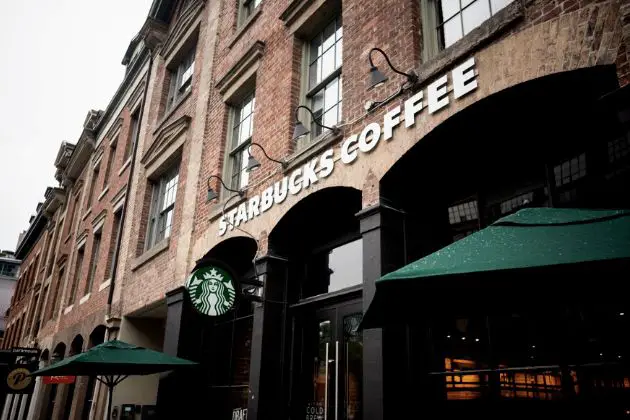Last Updated on April 19, 2023 by Timothy Byron Smith
Starbucks, the iconic American brand of coffeehouses, has been a global success story, with 35,711 locations in 80 countries. However, Australia is the one country where Starbucks failed to make a significant impact on the coffee culture.
Despite an aggressive expansion strategy in 2000, Starbucks was unable to compete with the established coffee culture in Australia and eventually had to shut down most of its stores.

8 Reasons Why Starbucks Failed In Australia
In this blog, we will explore the reasons Why Starbucks Failed In Australia and the lessons that can be learned from this experience.
Cultural Differences From the US
One of the main reasons why Starbucks failed in Australia is the differences between American and Australian coffee cultures. The Americanized menu, with oversized cups of coffee, syrupy drinks, and sugary snacks, did not resonate with Australian consumers who value high-quality coffee and more refined classic flavors.
The Australian coffee culture has a strong emphasis on quality and taste, and Starbucks’ menu did not meet their expectations.
Coffee Culture in Australia
Australia is renowned for its coffee culture, which is deeply ingrained in the country’s social fabric. Australians are passionate about coffee and have developed a discerning local heritage for high-quality coffee. Specialty coffee shops, which focus on artisanal coffee, have become a significant part of Australian culture. Aussies do have their own specialized drinks like Australian macchiato and Flat White which were overlooked by Starbucks in the beginning.

These shops offer personalized service and a cozy atmosphere, which is not possible to replicate in a chain like Starbucks.
Competition from Local Coffee Shops
Starbucks faced tough competition from local coffee shops in Australia. The rise of specialty coffee shops meant that Starbucks had to compete with established brands that had loyal customer bases. These local coffee shops offered better quality coffee and food, personalized service, and a more relaxed atmosphere.
Additionally, the rise of local coffee shops has led to native support for small businesses, making it difficult for a foreign chain like Starbucks to gain traction.
High Pricing
Another significant factor in Starbucks’ failure in Australia was its pricing strategy. Starbucks implemented a high pricing strategy, which did not align with consumer expectations in Australia.
Australians expect to pay a fair price for high-quality coffee, and Starbucks’ perception as an expensive brand made it challenging to attract customers.
Centralized Locations
Starbucks’ location strategy also contributed to its failure in Australia. Many of its stores were located in shopping centers and business districts, which lacked the calm and welcoming atmosphere that Australian coffee shops offered and were preferred by the locals.

Furthermore, Starbucks’ lack of accessibility and long lines meant that it was difficult for customers to drop in for a quick cup of coffee.
Lack of Localize Menu
One of the most significant reasons for Starbucks’ failure in Australia was its lack of localization. Starbucks’ standardized menu failed to cater to local tastes and needs, and the chain failed to innovate and adapt to the unique Australian coffee culture.
Although Starbucks failed to differentiate itself from its competitors, it was also unable to carve out a niche in the Australian coffee market and in the mind of Australian coffee enthusiasts.
Impact of the Great Recession
The Great Recession, which began in 2008, had a significant impact on the Australian economy, leading to a decrease in consumer spending. Starbucks, which had already been struggling in Australia, was hit hard by the economic downturn, as consumers increasingly turned to cheaper alternatives.
The high pricing strategy of Starbucks was not well-suited to the post-recession environment, and the chain was forced to close many of its underperforming stores.
Starbucks Vs Gloria Jean
Gloria Jean’s Coffees, a chain of coffee shops founded in the United States, launched in Australia in 1996 and quickly gained a foothold in the market.
The chain’s success in Australia was largely due to its focus on quality coffee and personalized service, which resonated with Australian consumers.
Gloria Jean’s aggressive expansion strategy and innovative menu offerings, such as flavored lattes and cold brew coffee, also helped it to gain market share. The rise of Gloria Jean’s and other local coffee shops posed a significant threat to Starbucks in Australia, as they offered a more authentic and localized coffee experience that Starbucks was unable to do. As of now, Gloria Jean has over 200 stores in Australia and they planning to expand their operation furthermore in the near future.
FAQs
Final Thoughts
Starbucks’ failure in Australia highlights the importance of understanding local culture and customer needs when expanding globally. Cultural differences, competition from local businesses, pricing strategy, location strategy, and lack of localization all played a significant role in Starbucks’ failure in Australia.
While Starbucks is still present in Australia, with fewer locations and a more localized menu, the chain’s failure provides valuable lessons for other global brands looking to expand into new markets.
Ultimately, success in a new market requires more than just replicating a successful model; it requires understanding and adapting to the unique culture and business environment of that market.


